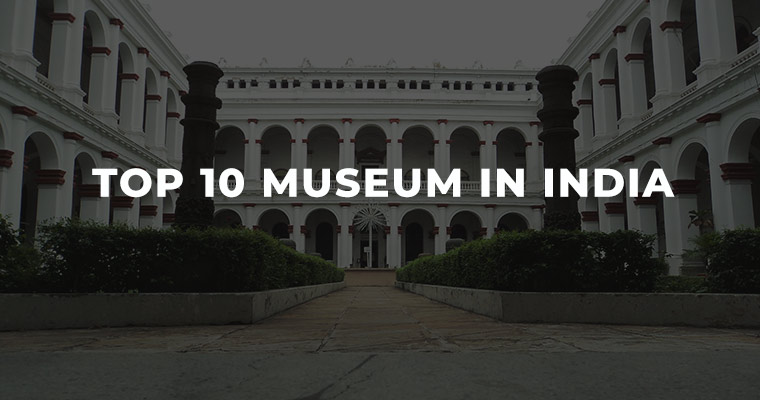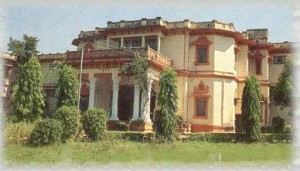1. H H Maharaja Jiwaji Rao Scindia Museum
Situated in the Jai Vilas Place, the Scindia Museum has a variety of objects ranging from sculptures, bronze weapon’s miniature paintings, manuscripts and coins.
Established in 1964, is controlled by a private trust. On view are a variety of objects ranging from sculpture, bronzes, weapons, miniature paintings, manuscripts and coins.
Also displayed are Persian carpets, cutglass and crystal ornaments, Chinese, Japanese and European art and bric-a-brac, Malabar and Madurai woodwork, a mechanical silver train which was used as drinks trolley and the gold painted Durbar Hall.
2. Bharat Kala Bhava
Bharat Kala Bhavan, located inside the BHU campus, is an art and architecture museum and houses a vast collection of paintings, Hindu and Buddhist sculptures and other materials of archeological importance. The Bharat Kala Bhavan was established in the year 1920 A.D. In the main hall of the Bharat Kala Bhawan, there is a figure of a man standing on one leg and one hand on his hip and lifting a mass of stone above his head, with one hand. The figure is said to be of Lord Krishna, lifting Mount Govardhana. Many images in the Bharat Kala Bhavan confirm to the existence of Krishna cult in Kashi in 15th and 16th century.
Bharat Kala Bhavan also has a great collection of miniature paintings from the courts of Mughals and other Kingdoms and principalities. Some of the important sections in the Bharat Kala Bhavan are Mahamana Malaviya gallery, Nicholas Roerich gallery, Chhavi (Painting Gallery), sculpture gallery, Nidhi (Treasures) gallery, sculpture gallery, archaeological gallery, decorative art gallery and Banaras through ages gallery.
3. Prince of Wales Museum
Barely a stone’s throw from the Gateway of India is the Prince of Wales Museum, a magnificent, but somewhat strange structure, built in a confluence of Gothic and Moorish styles, and crowned by a sparkling white dome. It boasts a good collection of ancient Indus Valley artifacts dating back to 2000 BC, plus some priceless Tibetan and Nepali Art. There is an entire gallery devoted to Buddhist tankha scrolls and another to Tibetan bronzes, but the chief attraction here is the collection of over 2000 miniature paintings from the various art schools of India. Next to the Museum is the Bombay Natural History Society, which has an extensive collection of local flora and fauna.
4. Central Museum,Bhopal
The Central Museum in Bhopal is considered to be one of the most sought-after tourist hubs that has recently come under the limelight. It has been successful in highlighting the true grace and exuberance of local sculptures and artisans who have dedicated their entire lives to art. Apart from harboring local antiquities the Central Museum in Bhopal also houses rare artifacts that have descended from all over the state of Madhya Pradesh.
The Central Museum in Bhopal came into being in the year of 1949. Since then the sheer virtuosity and versatility in bringing the true and raw talents to the forefront and providing them with a pedestal to spread their work that has been shown by the Central Museum in Bhopal is indeed something to appreciate.
5. Hawa Mahal Museum
Jaipur is known as the pink city, there are many exciting places, which attracts a lot of people. One of them is Hawa Mahal, which is a very enchanting sight, built by Maharaja Sawai Pratap Singh and it is a part of City Palace complex. Hawa Mahal is intricately carved and bordered with white motives. Motifs and carvings designed on the walls of the Hawa Mahal are proof of the efforts, dedication and skillfulness of the artists of that period. Near Hawa Mahal, you have Hawa Mahal Museum.
Built in 1983, the museum is just located behind the enchanting Hawa Mahal, adjoining with Pratap Mandir. The sculptural heritage are available here from Ganeshwar, Virat Nagar, Raid, Sambhar and Nagar and exhibition things are terracotta, antiquities, fish hooks, arrow heads, swords, helmets and belongings of the Maharajas of Jaipur.
6. Indian Museum
The Indian Museum is the oldest and the biggest museum in India. Originally the Indian Museum was a part of the Asiatic Society and opened to public in the year 1875. It is located at the crossing of Park Street and Chowringhee road on 27 Jawaharlal Nehru Road. The museum remains closed on Monday and visiting hours are from 10 am. to 5 pm. The Indian Museum is one of the best museums in Asia. The huge variety of collections astonishes us, which range from sculpture, fossils, meteorites, embryos and skeletons of prehistoric animals. The museum also displays extraordinary paintings and artifacts of both ancient and modern India.
The ash remains of Lord Buddha is one of the valued assets of the Indian Museum. The museum helps students to learn on various subjects namely history, geography, biology, anthropology, etc. The Egyptian mummy is also an interesting exhibit of the museum. There is a gallery that exhibits a marvelous collection of 50,000 coins. The special attractions of the museum include Gandhara art, fossils and skeletons of primitive animals, Kalighat Pal, Tibetan Thankas, and other rare paintings.
7. State Museum Of Tripura
Being in Agartala is a different experience – the lush greenery, the smoky houses, the foggy mornings and the farms of flowers. It the nature which speaks in each and every inch of this place. It seems that the nature is blushing seeing the first rays of the Sun. The stars are appreciative of the night and the moonlight dances to the gushing of the tea plants. Its just like being second to nature – the charm and the beauty of the nature is so much as it calls every visitor to stay here forever. It is in this beautiful land that the State Museum Of Tripura was built long time back.
Established in 1970, in Agartala its a multipurpose Museum with four galleries namely the Tribal and cultural gallery, Painting gallery, Photo gallery, Indian Sculpture through all ages. Its being taken care of by the Directorate of Art and Culture.
8. Central Museum (Albert Hall)
Albert Hall Museum is a museum in Jaipur city in Rajasthan state of India. It is the oldest museum of the state and functions as the State museum of Rajasthan. The building is situated in Ram Niwas Garden outside the city wall opposite New gate and is a fine example of Indo-Saracenic architecture. The building was designed by Sir Samuel Swinton Jacob and was opened as public museum in 1887. It is also called the Government Central Museum. Maharaja Ram Singh initially wanted this building to be a town hall, but his successor, Madho Singh II, decided it should be a museum for the art of Jaipur and included as part of the new Ram Nivas Garden. The museum has a rich collection of artefacts like paintings, carpets, ivory, stone, metal sculptures, colourful crystal works
9. Nehru Memorial Museum
The Nehru Memorial Museum lies on Teen Murti Marg (Road) in Teen Murti Bhavan which was earlier the residence of the British Commander-in-Chief during the British Raj designed by a famous architect named Robert Tor Russel who also designed the famous Connaught Place, the Western and Eastern Courts situated in Janpath. This Colonial style building was later converted into the residence of Pt. Jawaharlal Nehru, the first Prime Minister who stayed here for 16 years during his time in office. This residential building was then converted into the Museum and Library in memory of Pt. Jawaharlal Nehru and in order to preserve his memorabilia.
10. Jaigarh Fort Museum
Jaigarh fort is one of the most spectacular forts on the hill top and the museum is located in its complex, the fort and gives a splendours image of the Rajpuatna and Mughal architecture and way of their lives. It is one of the unique showcase of the Rajasthani Culture and regime. One can see the royal ness of Rajasthan not only in this museum but also in the sands which surround the roads of Rajasthan.

